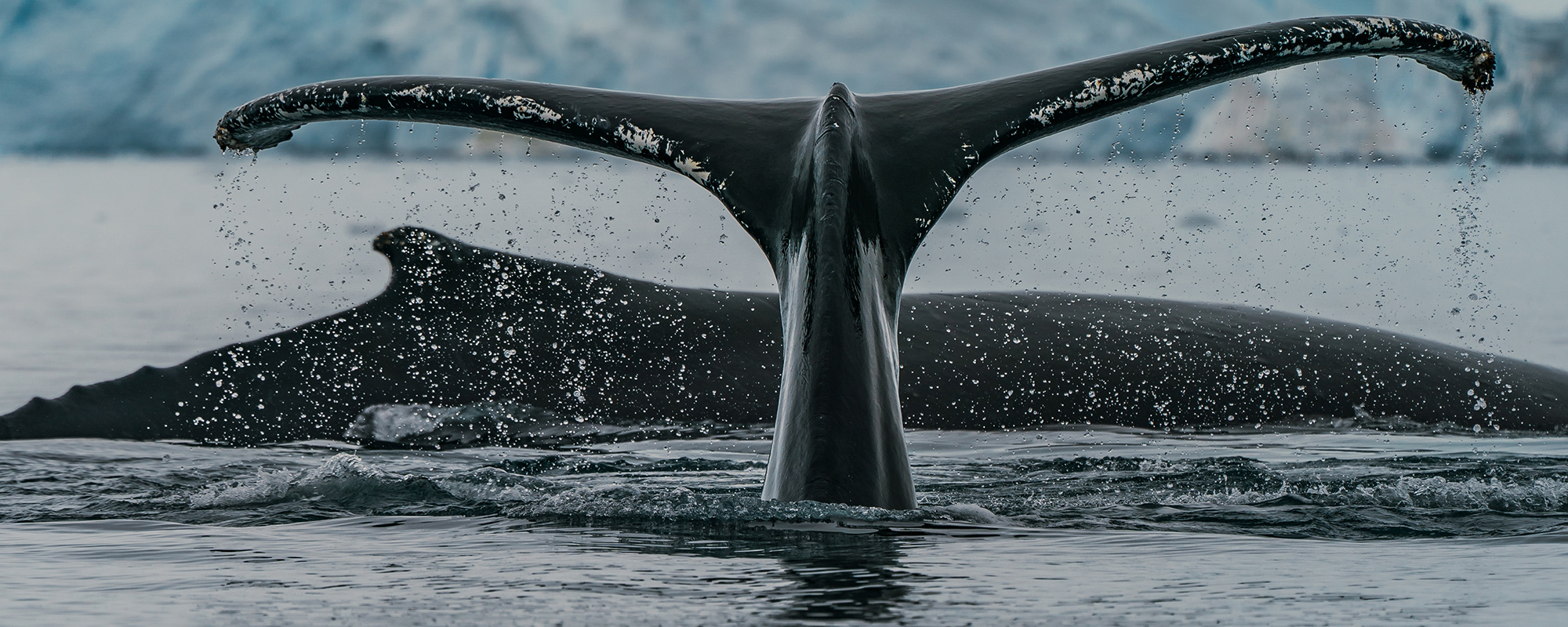- 1300 761 980

Over the past months we’ve shared blogs on the wildlife you can expect to see in Antarctica. We’ve taken a closer look at the penguin species, as well as the seals. This month we shine the spotlight on one of the world’s most magnificent wonders… Learn about the mighty whale and the types to look out for on your Antarctic cruise!
Whether you spend your weekends whale watching or not, we can all agree that whales are one of the most majestic animals on the planet. Whales are social creatures that are known to communicate by echolocation. They are air breathing mammals that spend their entire lives exploring the vast seas.
Whales are classified as cetaceans, of which there are currently 90 recognised species. Many of these species, such as the Humpback and Southern Right whale, make a regular migration to the nutrient rich waters of Antarctica to feed. Sighting one of these stunning creatures is a truly awe-inspiring moment; read on to find out some of the types you might spot on your voyage to Antarctica…
Witnessing the 33 metre long blue whale, gliding its body weight of up to 200 tonnes, through the water is an incredible experience! The Blue Whale is the largest creature to have ever lived. This magnificent animal lives on a diet of about four tonnes of krill every day. However, if you’re looking for a whale that is a turquoise blue or aqua colour be warned, you won’t find it– the blue whale is a blue-grey colour with light grey undersides.
Humpback whales are easily identified by their dark grey or black colour and white notches known as tubercles that cover their head. Considered social creatures, they may come and investigate your boat and even put on a bit of a show. However, they generally travel alone or in small pods of two or three. A member of the baleen whale family, humpbacks feed using a baleen plate that filters out krill as they suck in large amounts of water.
A mesmerising black and white whale, orcas are also known as “killer whales”. This is due to the animal’s ability to hunt down larger marine animals such as other whales and sea lions. Orcas are an incredibly adaptable species. They are found in seas surrounding most coastal countries and can live in both warm and cold climates. They have also been known to beach themselves in order to catch seals on land. This formidable predator is definitely one to look out for!
Unfortunately named as such because they were the “right” whales to catch, these whales were hunted almost to the point of extinction. A type of baleen whale and one of three species of right whales, this whale is easily distinguishable by the callosities that can be seen upon its head. Forming something of a bonnet, the patterns of these are unique to each whale and can be used to tell them apart.
Although one of the smallest baleen whales, Minkes can grow to an impressive 10 metres! Naturally inquisitive creatures, you have a greater chance of seeing Minkes than other baleen whales and they will often approach boats and are commonly found in Antarctic waters.
The sperm whale has the largest brain of any living creature and it shows! This exceptional creature has a massive bulbous head and lengthy body, growing up to 18m long. A unique quality of these whales is the large amount of spermaceti within their head. Though its true purpose is unknown, it is thought to assist with buoyancy or in completing their long dives of up to 90 minutes.
No matter what whales you see in Antarctica, it’s sure to be a breathtaking experience. Participating in a moment of such a majestic species’ life is a truly humbling moment. So rug up and bring your binoculars– Antarctica is one of the best places to see whales in the world!
Suite 2, 1st Floor
261-271 Wattletree Rd
Malvern VIC 3144



For tailor-made itineraries or enquiries…